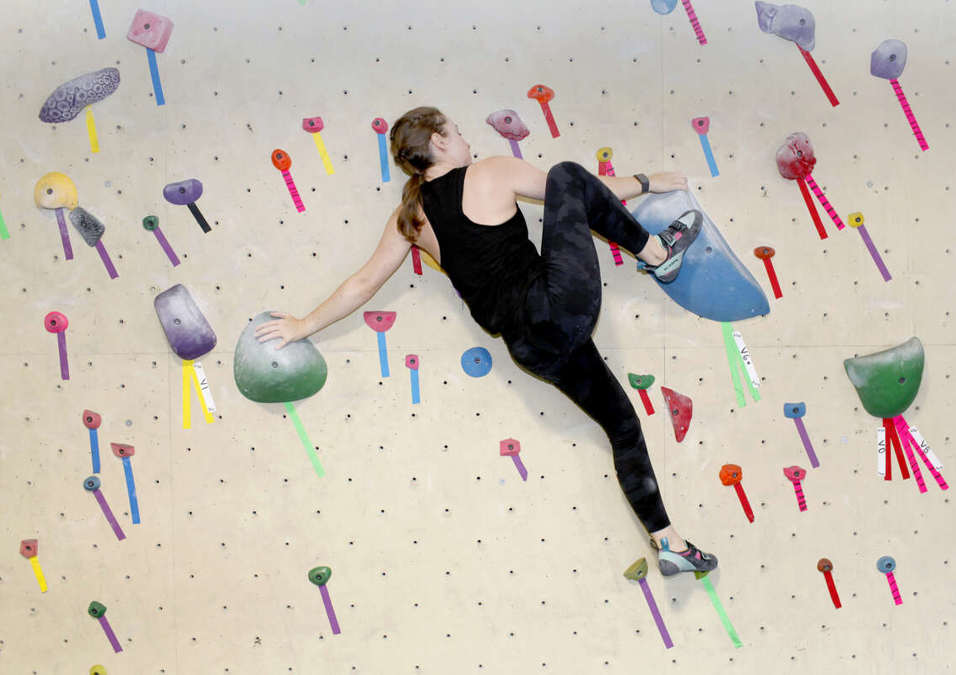Try sport climbing for a social workout!

SIGN UP FOR YOUR FREE DAY PASS TODAY!
Climbing at the Paris Olympics may seem daunting to the casual athlete, given the competitors' remarkable speed, strength, and agility.
However, climbing is more accessible than it appears, with over 600 climbing gyms across the United States welcoming beginners.
These gyms offer both roped and rope-free climbing, ensuring a comprehensive workout with consistent practice.
Televised climbing can appear intimidating, whether it's "Free Solo" or scenes of climbers scaling towering peaks.
But recreational climbing is different, offering a secure environment in gyms.
Eric Horst of trainingforclimbing.com highlights that climbing is an excellent full-body workout, from fingers to core.
Climbing gyms provide a controlled setting where newcomers can start climbing within an hour of their first lesson.
Recreational climbing closely resembles Olympic climbing, minus the need to precariously hang by your fingertips. It accommodates all skill levels, though committing to get started can be challenging.
Nick Draper, a sports science professor at the University of Canterbury, notes that indoor climbing walls have greatly improved accessibility, making it easier for more people to engage in the sport.
Beginners might start with bouldering, which involves climbing without ropes on shorter walls with padded floors, or top rope climbing, where a climber is secured with a rope and assisted by a partner to climb higher walls.
More advanced climbers may try lead climbing, which involves clipping into safety points while ascending, or venture into outdoor rock climbing.
Stepping into a climbing gym for the first time can be intimidating, says Ivan Barcinal, general manager at Reach Climbing and Fitness.
He suggests taking an introductory class to learn basic skills like harnessing and rope management.
For those preferring to stay closer to the ground, bouldering offers a community-oriented experience, with opportunities to socialize and support fellow climbers.
The key is to start at a comfortable level. Draper recommends using larger holds on less difficult walls for beginners, gradually building muscular endurance and flexibility.
Eric Horst, who has achieved over 400 first ascents, emphasizes climbing's comprehensive physical benefits in his books and seminars.
Climbing engages diverse muscle groups, enhancing strength, endurance, and core stabilization.
For those afraid of heights, climbing in a controlled environment also offers mental health benefits by helping manage fear and stress.
Climbing isn't just for the young or already fit—it's a lifelong activity. Nick Draper notes that it helps maintain upper body strength, which can decline with age.
Rachel Chalik, an avid climber, appreciates the supportive community within the climbing gym, where fellow climbers celebrate successes and provide encouragement during challenges, making the sport even more rewarding.
Source: myjournalcourier
The opinions shared in the GymNation blog articles are solely those of the respective authors and may not represent the perspectives of GymNation or any member of the GymNation team.
GET YOUR FREE TRIAL TODAY














































































